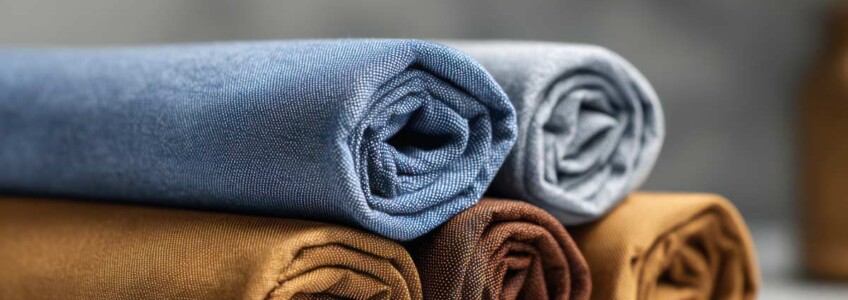Blended linen fabrics are an increasingly popular choice among both professionals in the textile industry and those seeking quality materials for clothing and home decor. Their success lies in the balance between natural aesthetics, comfort, and practicality. They combine the properties of linen—a noble and ancient fiber—with those of other fibers, whether natural or synthetic, to enhance usability and reduce drawbacks. Manifattura Foderami Cimmino offers a guide to discovering blended linen, clearly explaining what it is, its benefits, how to identify it, and when to choose it.
What is a linen blend fabric?
Blended linen fabrics are created by combining linen with other fibers, selected to make the material easier to work with and more suitable for specific uses. Blended linen is known for its breathability and natural appearance, but it also has some limitations: it tends to be stiff, wrinkles easily, and can feel rough. Mixing linen with other yarns allows for the creation of more versatile fabrics while maintaining a good level of naturalness.
Definition and composition of the flax mixture
The term “blended linen” refers to a fabric in which linen is combined with other fibers in varying proportions. Typically, the linen content ranges from 30% to 70%, while the remaining part consists of cotton, viscose, polyester, or other fibers. This combination is designed to preserve the freshness and lightness of linen while enhancing softness, durability, and ease of care. It is an effective alternative for those seeking natural and blended fabrics to use in fashion and interior design.
Linen cotton, viscose or polyester: which to choose
The three most common fibres associated with flax are:
- Blended linen and cotton: combines breathability and softness, highly appreciated for summer use. More durable than pure linen, yet still natural.
- Blended linen and viscose: viscose adds fluidity, sheen, and drape. Perfect for feminine and elegant garments.
- Blended linen and polyester: combines the rustic look of linen with the strength and practicality of polyester. Less prone to wrinkling and more durable.
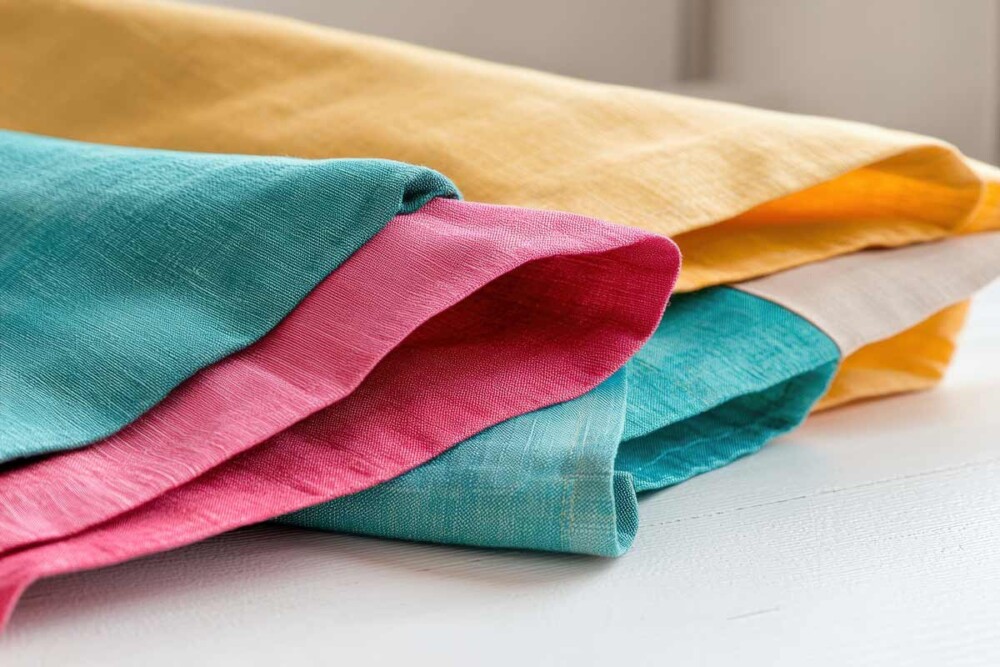
Advantages linen blend fabric: why choose it
Using blended linen fabrics means choosing a material that retains the value of linen while making it more accessible and comfortable. The combinations with other fibers enhance technical performance while preserving a natural aesthetic.
Practical and durable: alternative to pure linen
Pure linen requires special care: it wrinkles easily, needs delicate washing, and demands intensive ironing. Blended linen, on the other hand, is more stable, less prone to deformation, and easier to handle. For example, a blended linen and polyester fabric is more resistant to machine washing and dries faster without losing its shape. The difference between pure and blended linen is noticeable from the very first use: blends are easier to manage in daily life and offer a more consistent aesthetic result.
Comfort, breathability and easy maintenance
One of the main reasons for choosing blended linen is comfort. The fabric is less stiff, softer on the skin, and still ensures excellent breathability, which is essential during the warmer months. Maintenance is also easier: many blended linen garments do not require ironing or need very little care. These advantages make blended linen an excellent choice both for personal use and for tailoring and artisanal production.
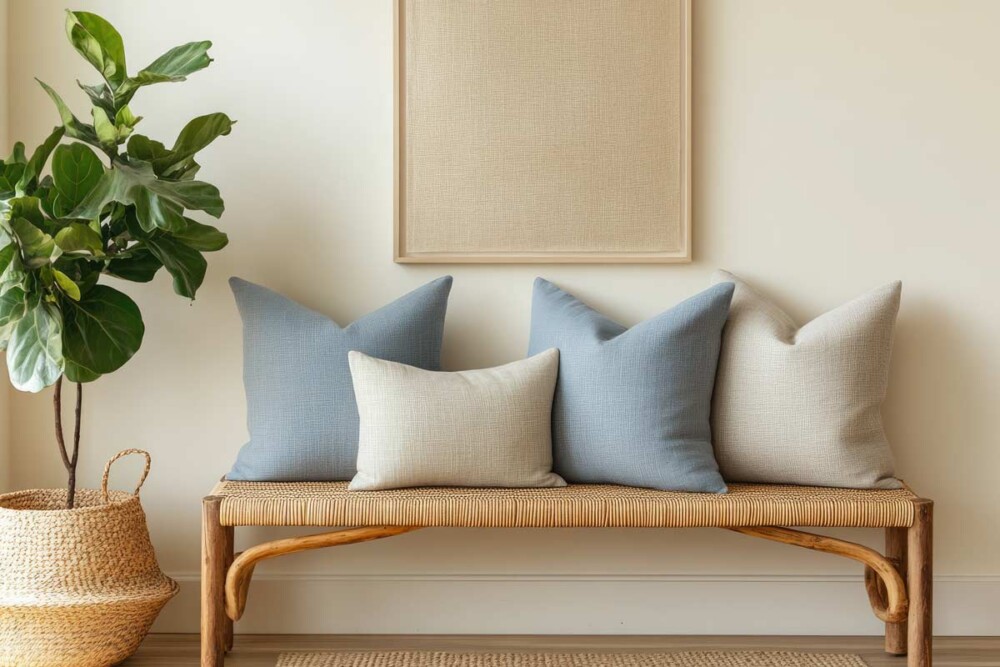
How to recognize the linen blend: practical guide
Understanding how to identify blended linen is useful for those purchasing fabrics online or looking to make more informed choices. There are some visual and tactile indicators that can help, along with reading labels or product descriptions.
Eye, touch and washing test
A blended linen fabric often has a smoother surface than pure linen and a softer drape. It may show a slight sheen, especially if it contains viscose. To the touch, it feels more flexible and fluid. Another useful clue is how it reacts to washing: blends tend to wrinkle less, maintain their shape more easily, and dry faster.
Reading label and data sheet: characteristics of mixed flax explained
The composition percentage is always specified by law. If you’re looking to understand how to identify blended linen, simply check the label or, in the case of an online purchase, read the technical sheet. A blended linen might show compositions such as “55% linen – 45% cotton” or “70% linen – 30% polyester.” It’s also helpful to look at details like weight, type of weave, washing instructions, and intended use.
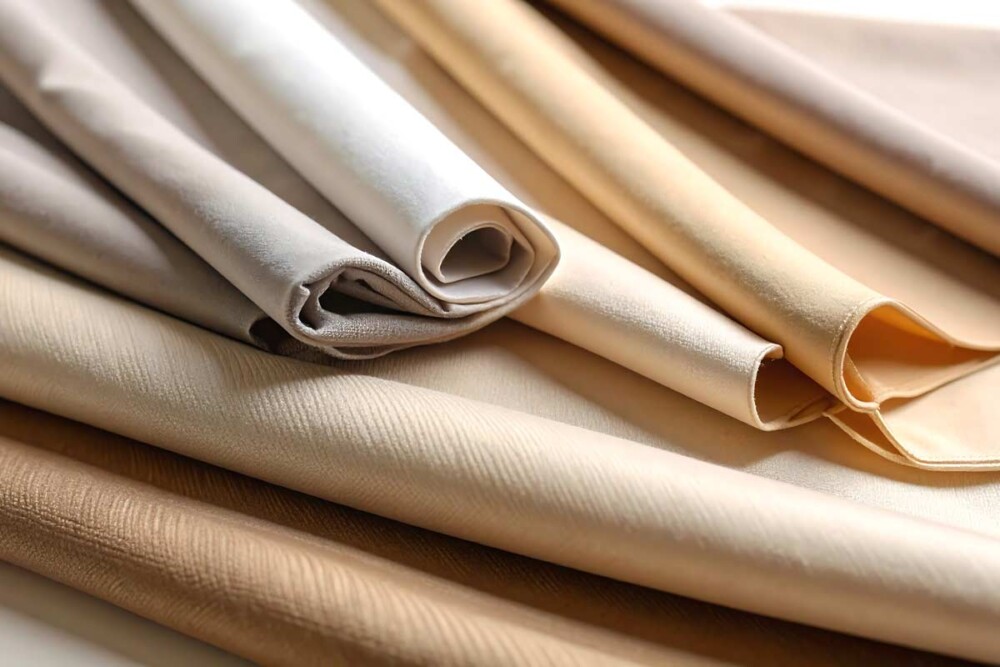
Linen blend: recommended uses
Blended linen fabrics are used in numerous industries thanks to their versatility. They offer an excellent balance between technical performance, aesthetics, and cost.
Summer clothing in mixed linen: shirts, trousers and light garments
In the fashion sector, the linen blend is perfect for making summer and spring garments. It is often used for:
- Men’s and women’s shirts, ranging from casual to formal styles
- Lightweight trousers, in both classic and relaxed cuts
- Unstructured jackets, featuring a natural look
- Summer dresses and caftans
Blended linen and cotton is particularly suitable for casual linen clothing, while versions with viscose are ideal for more fluid and draped garments.
Home and decor textiles in linen mix: between style and functionality
Blended and natural fabrics such as mixed linen are also widely used in home decor. The most common applications include:
- Curtains and decorative drapery fabrics
- Table linens and table runners
- Cushion covers, sofa and armchair upholstery, home decor fabrics
- Bedsheets and duvet covers in blended linen and cotton, soft and breathable home linen fabrics
In these cases, blended linen and polyester is highly valued for its durability and long-lasting performance, without compromising on elegance.
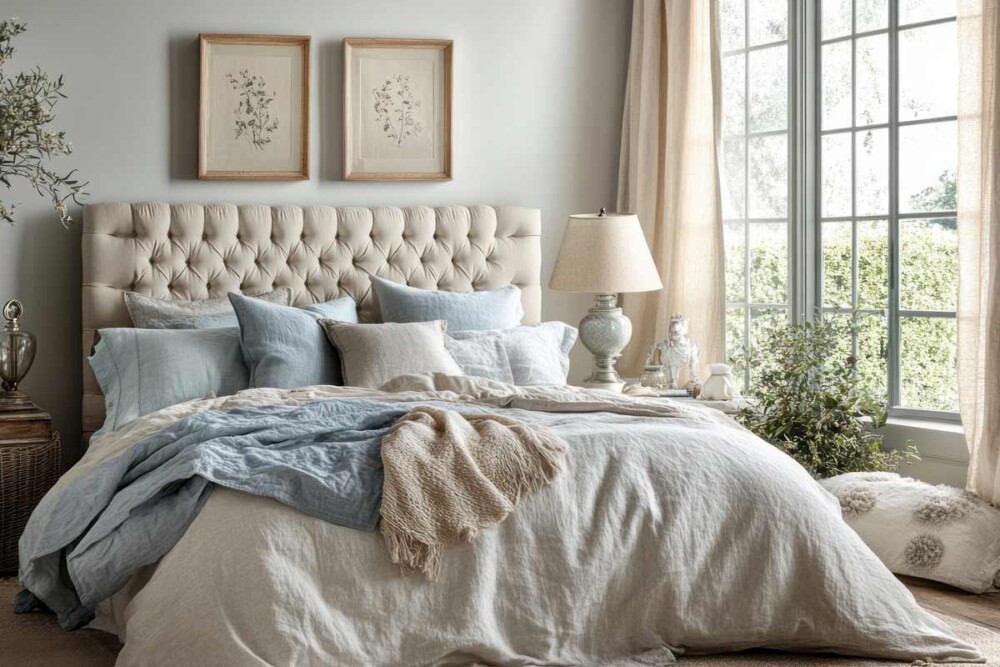
Where to buy linen fabrics
Those looking for high-quality blended linen fabrics will find a wide range of options on CimminoShop.com, a website specialized in selling fabrics for both professional and domestic use. The catalog includes solutions in blended linen and cotton, blended linen and polyester, and other variants, ideal for clothing, decoration, and linen home textiles. Each product sheet is detailed, with accurate technical information that helps make an informed choice, even for those unfamiliar with the field. Shopping online also makes it easy to compare options, read reviews, and conveniently order the required quantity.
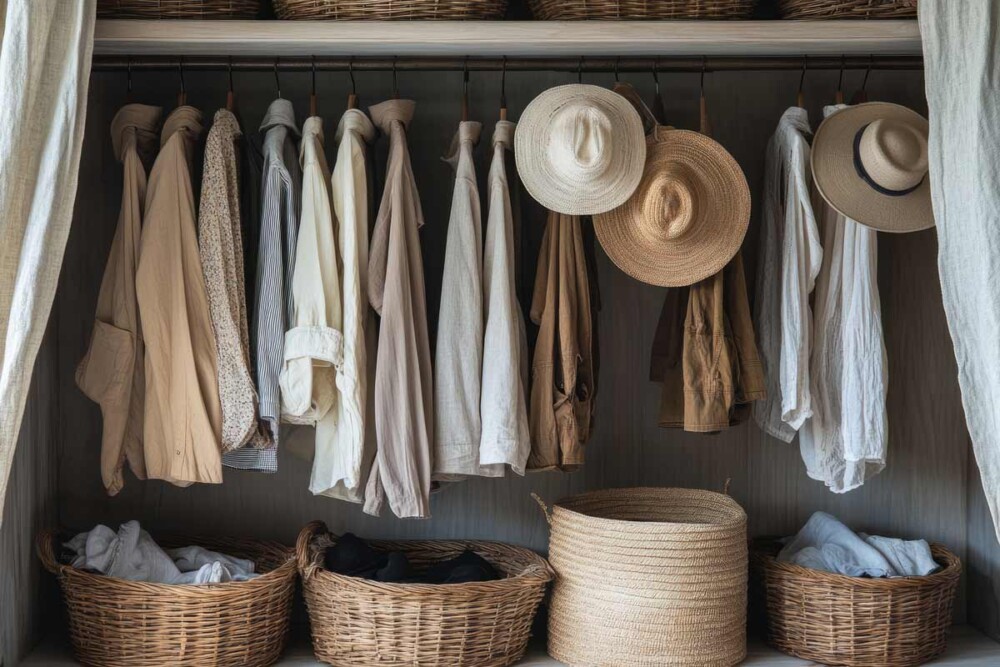
The best linen blend fabrics on CimminoShop
If you’re looking for high-quality blended linen fabrics that are versatile and ready to use for clothing, decoration, or DIY projects, the website CimminoShop.com offers a curated selection of items suited to every need. Here are some of the best available products, selected for their composition, visual appeal, and ease of use.
Tela Medioevale
Tela Medioevale is a blended linen fabric made of 50% linen and 50% cotton, with a width of 150 cm and a weight of 160 g/m². In raw color and featuring a natural look, it stands out for its remarkable versatility.
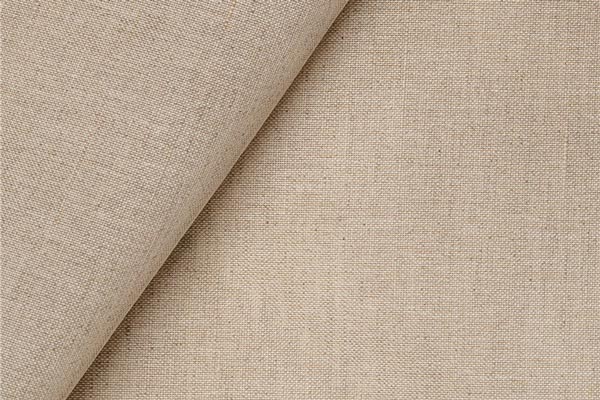
It is particularly well-suited for making tablecloths, sofa covers, kitchen textiles, as well as handmade favors and creative home decor projects. Thanks to its durability and substantial texture, it lends itself to a wide range of applications in both domestic and decorative settings.
Tenda Mara
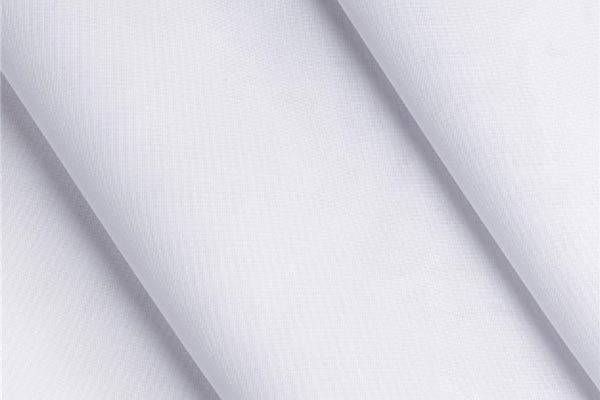
Tenda M.L. Mara is a blended linen and polyester fabric, composed of 90% polyester and 10% linen, with a width of 330 cm and a weight of 111 g/m². Characterized by light and delicate shades, it is ideal for creating elegant and luminous curtains.
This fabric is also suitable for more creative home decor projects, such as favor bags or decorative applications. Its lightweight structure and subtle pattern make it a good fit for both classic and contemporary interiors.
Tessuto Artemide
Tessuto M.L. Artemide is an OEKO-TEX® certified blended linen fabric, composed of 50% polyester, 40% cotton, and 10% linen, with a generous width of 320 cm and a weight of 240 g/m². Ideal for making table linens, coordinated textile sets, and upholstery, it is valued for its versatility, durability, and elegant appearance.
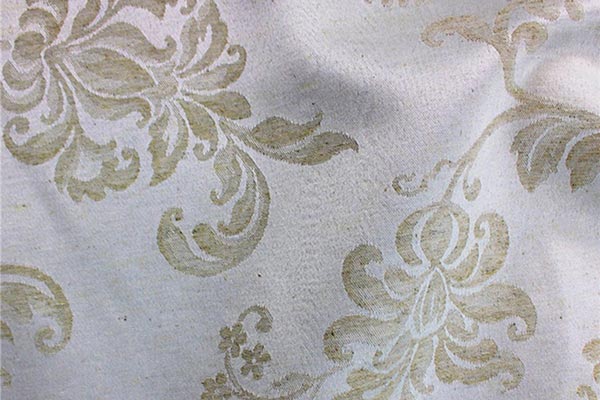
The mixed composition facilitates processing, while the natural appearance makes it ideal for furnishing refined and functional environments, even on large surfaces.
Tendaggio Linux
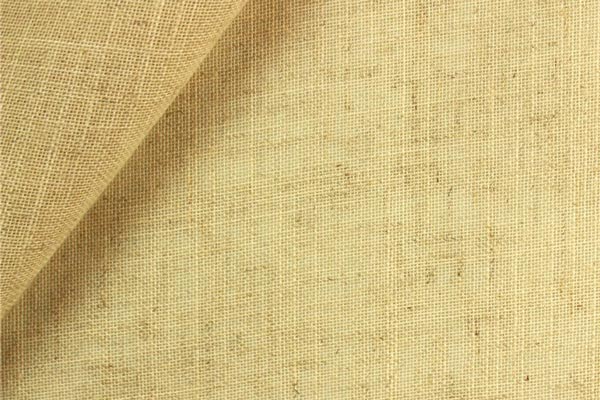
Tendaggio Linux is a blended linen and polyester fabric, composed of 70% polyester and 30% linen, with a width of 300 cm and a weight of 300 g/mtl. It combines the natural charm of linen with the durability and easy care of polyester, offering a perfect solution for light and refined curtains.
The semi-transparent texture gently filters light, creating a warm and sophisticated atmosphere, suitable for both classic and modern interiors.
FAQ- Frequently Asked Questions about linen blend fabrics
A linen blend fabric consists of a percentage of flax combined with other natural or synthetic fibres, such as cotton, viscose or polyester. This improves softness, strength and ease of use compared to pure flax.
The difference between pure and blended linen lies in the composition: the former is 100% linen, stiffer and more delicate; the latter includes other fibers that improve wearability, reduce wrinkling, and make maintenance easier.
The main advantages of blended linen fabric include greater durability, a softer feel, reduced wrinkling, and good breathability. It is ideal for summer clothing and home textiles.
To understand how to identify blended linen, it’s helpful to read the composition label, observe the fabric’s hand (softer and more fluid than pure linen), and notice the presence of a slight sheen or a more even drape.
Yes, blended linen and cotton is considered a natural fabric, as both materials are derived from plant-based fibers. It is highly appreciated for its softness and freshness, especially during the warmer months.
The polyester mixed linen retains some of the typical breathability of flax, but is more resistant and less prone to creases. It is suitable for those looking for a fabric with a natural look but low maintenance.
The linen blend fabrics are used for shirts, light trousers, summer dresses, curtains, tablecloths, bedding and interior decoration. Their versatility makes them suitable
Compared to pure flax, mixed linen is easier to iron, thanks to the presence of fibers that make it more stable and less prone
Yes, some natural and mixed fabrics such as linen combined with cotton or polyester are ideal for upholstery, thanks to their robustn
You can find a large selection of linen fabrics on CimminoShop.com, with detailed product sheets to choose from in term



